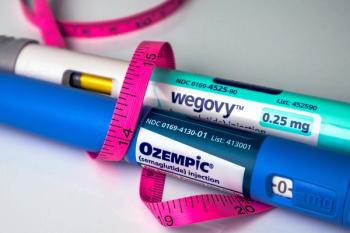
Hospital saline shortages trigger pharmacy action plans
Is your hospital ready? The emergency is here.
With intravenous (IV) saline solution in short supply throughout the country, hospital pharmacists must have action plans in place to ensure patient safety. Millions of units of IV saline are used each week in the course of patient hydration, dialysis treatment, and emergency care and surgery. Shortfall can mean circumstances of extreme challenge for providers and their patients.
A recent survey made by the
“Until manufacturing can be more fully ramped up, manufacturers have responded by rationing IV saline, with healthcare facilities receiving IV saline supplies based on order history rather than on current need,” said Marvin Finnefrock, PharmD, divisional vice president of clinical and purchasing services at
Why the shortage?
News reports have linked the IV saline shortage to manufacturer supply problems. These date back to last September, when a major manufacturer announced a temporary shortage in its 1-L saline product. Later in the year the routine shutdown of another manufacturer’s production facility intensified the strain.
“FDA was aware of both situations, and while it cannot mandate that manufacturers produce a certain amount of IV saline or require them to increase production, it was working with the three major IV saline manufacturers to meet demand,” said Finnefrock.
“Hospitals exist to care for patients, and their No. 1 priority is to ensure that the best and most appropriate care be given to every patient, whether admitted or treated on an outpatient basis,” he said. “Critical shortages of any drug or drug therapy force hospitals to make decisions on how to manage patient care, divert attention to finding alternatives, and raise questions about the reliability and flexibility of the drug supply chain. And they can impact quality and cost of care. All of which are matters of concern to hospital and managed-care decision-makers.”
Three-step action plan
Finnefrock recommends the action plan that “we immediately put in place for our 400 hospital and healthcare facility clients when the effects of the IV saline shortage began to be felt at the hospital level.”
Communication. With any drug shortage, timely, actionable, and reliable communication between all concerned parties is critical. When a communication plan is in place, receipt and transmission of vital information can take place smoothly and efficiently. At CPS, said Finnefrock, purchasing and clinical teams meet to develop and implement a communication plan, with follow-ups that include a weekly update sent to network hospitals.
“A key component of our communication update was to advise our hospitals to be prepared for a protracted shortage and to provide an action plan to help mitigate the effects of the shortage on their facility,” Finnefrock said.
“We also needed to be on hand to assist them with navigation through the allocation process,” he continued. “Each manufacturer has a different process for distributing medications during a rationing period. Our purchasing teams work with manufacturers to get the latest information on the allocation process to our hospital members. This includes transit times, inventories, and release dates,” he said.
Conservation. “When drugs or drug therapies are in short supply, conservation becomes a major area of focus,” said Finnefrock. “The IV saline shortage is no different.” The CPS medical team advises hospitals to conduct a wastage review in all areas where IV saline is routinely used without specific direct indication, such as in elective procedural areas and emergency departments, and to establish guidelines leading to conservation. For instance, CPS and its clients immediately conducted a review to identify patients who could take liquids by mouth.
Substitution. Hospitals should establish plans for adequate substitution regimens, a step that requires careful oversight from a team of qualified pharmacists and clinicians, to ensure safe and effective use of substitutions on a patient-by-patient basis.
“While this is a necessary step, we have to also keep in mind that alternatives to IV saline may soon be in short supply. This necessitates, once again, that a robust, effective, and timely communication plan be in place,” said Finnefrock. “Until the IV saline shortage subsides, it is imperative for physicians, nurses, and pharmacists at each site to work closely together to ensure the safety of patients.”
Newsletter
Pharmacy practice is always changing. Stay ahead of the curve with the Drug Topics newsletter and get the latest drug information, industry trends, and patient care tips.




